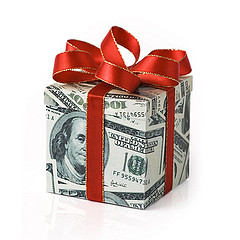Our firm’s quantitative process screens not only for stocks that we believe are promising, but also, conversely, for those that aren’t very attractive. And our short screen kicks out a lot of candidates, in this case, tech names. Like what names, you ask?
How about E2Open (EOPN)? The Silicon Valley-based enterprise-software company scores high in Buzzword Bingo (“cloud,” “SaaS,” “analytics”), but scores low when it comes to realizing that when you hire a bunch of outside consultants to rep your product, you have to spend your own money to train them. A lot of money. Still, EOPN’s 30% booking growth in its September quarter and lack of direct competition makes it hard to be too grumpy about its near-term prospects.
What about SunEdison (SUNE), which you might remember from your nightmares as MEMC Electronic Materials? The Missouri-based silicon-wafer manufacturer, which changed its name earlier this year, addresses both the semiconductor and solar industries and does neither especially well. SunEdison has had negative operating cash flow for nearly three years.
Now management wants to split the company into three segments. The semi business will be carved off and the solar business split into the current cell-wafer-module-installation segment along with a quasi-utility (charmingly named “YieldCo” by management) designed to throw off cash flow from solar installations SUNE hopes to manage rather than sell. Yikes.
Right now, SUNE looks more caterpillar (the insect, not the heavy-equipment maker) than butterfly as it goes through its metamorphosis. But its stock has risen from roughly $2 a share a year ago to around $12 today. And the stock market in 2013 has rewarded price momentum. SUNE looks like a mess. But true believers seem to be in control. We say “good luck” and move on to our featured train wreck.
You’re probably familiar with Angie’s List (ANGI), the local-service-rating web site. Angie’s List went public just over two years ago and its stock peaked at around $28 a share in July of this year. But the company followed a bad June quarter with another one in September. And with over 44% of the float sold short, we’re not the first investors to have serious doubts about the company. So let’s focus on the things that really set our alarm bells off.
First, the company has had negative free cash flow for the 12 months ending Sept. 30, 2013. For a public company that is neither a biotechnology nor a development-stage pharmaceutical developer, that’s not good.
Second, Angie’s List reported a very disappointing September quarter, low-lighted by a rapid deceleration in the number of service providers signing up to co-market with the company.
Third, average (monthly) revenue per user (“ARPU”) continued its steady decline. According to the research analysts at Stifel Nicolaus, ARPU was $2.50 in the September quarter, down from $2.76 a year earlier, and from an average of $3.39 in 2011. Meanwhile, management’s attempt to fiddle with lower membership fees in key markets backfired, and it seems the company has reverted to its previous standards.
Membership fees provide the company with about 40% of its total revenue (the balance is from service provider advertising), so perhaps this isn’t so dreadful. It’s even possible that thanks to pricing elasticity, lower subscription fees might result in higher subscription numbers and revenue on down the line.
Lastly and most importantly, Angie’s List is in a winner-take-most segment, where merchants and consumers would prefer there to be just one source for service-provider reviews. Think Google (GOOG) for search. Or LinkedIn (LNKD) for a professional network. But Yelp (YELP) and HomeAdvisor (IACI) offer similar services to Angie’s List and social-media sites in general are powerful referral networks in their own right. None of these players are threatened by Angie’s List and seem here to stay. And most of them (e.g. Facebook) are ad-supported, and, therefore, don’t demand membership fees.
After reporting for the third quarter, the consensus estimate for Angie’s List’s 2014 earnings per share was cut in half to $0.16. But it reported a loss of $0.23 a share and negative operating cash flow in its September quarter. A money-losing company trading at a forward P/E of 81 and facing diminishing pricing power is a categorical short. Yes, the price has come down recently and analysts from Piper Jaffray and Stifel have been trotting out the usual “better risk/reward” phrases to continue justifying their buy ratings. But a cheaper stock price doesn’t turn a weak business model into a strong one.
The investments discussed are held in client accounts as of November 30, 2013. These investments may or may not be currently held in client accounts. The reader should not assume that any investments identified were or will be profitable or that any investment recommendations or investment decisions we make in the future will be profitable. Past performance is no guarantee of future results.


